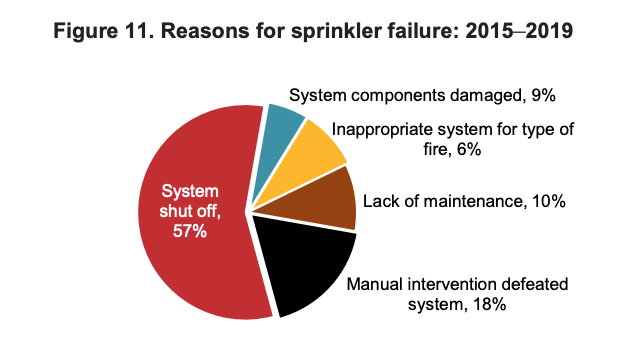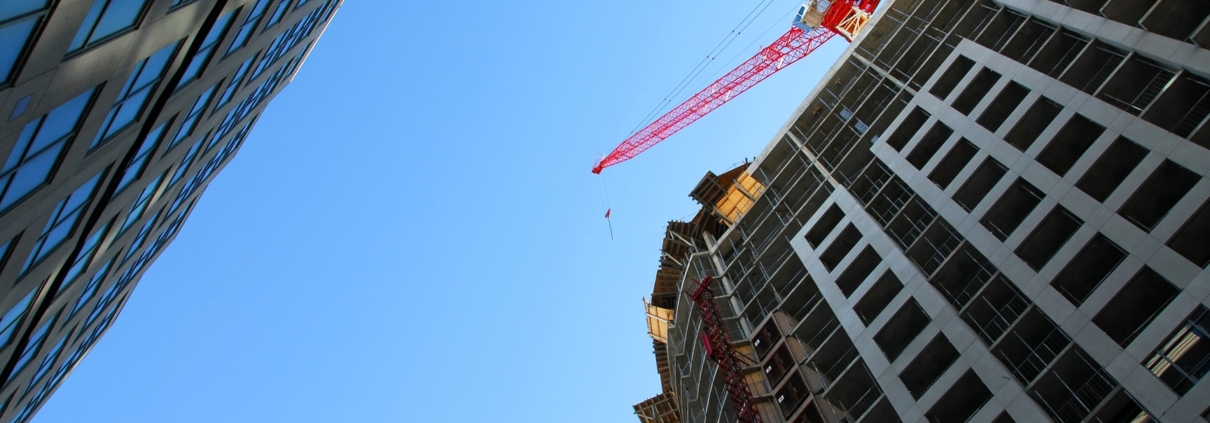When it comes to commercial fire sprinkler systems, the common causes of failure include poorly installed systems, aging systems and lack of maintenance.
In residential fire sprinkler failures, improper use of fire sprinklers is more often to blame with stories of lawn sprinklers that are misused as indoor fire protection in carports or home warehousing situations, to sprinkler pipes used to support heavy cables and other pipes that collapse under the weight,.
Whether commercial or residential, the single greatest cause of fire sprinklers failing to protect life and property is human error. Ignoring activated sprinklers, turning the system off because of frequent alerts, fear of water damage that outweighs fear of fires and lack of understanding of how to operate the sprinkler system are among the reasons that systems are turned off. The National Fire Protection Association (NFPA) reports that fire sprinklers fail approximately 7% of the time—and often, those failures are a result of human error.
Properly installed sprinklers are 92% effective in the face of a real fire incident, according to the NFPA. Additionally, the rate of firefighter injuries per home fire in which sprinklers were present was 78% lower than in locations without sprinklers. In addition to loss of property, loss of life within your family or organization and the loss of life of firefighters should be enough to inspire business owners and homeowners to take sprinkler system activation more seriously.

The chart above would indicate that 18% of fire situations in which sprinkler systems fail to stop the fire are caused by a manual override of the automatic sprinkler system while 57% of situations are caused by the system being shut off which, in cases of both commercial and residential fires are human error.
The most common reason that sprinklers failed to operate was that the system was shut off at some point before the fire. So, while regular maintenance of fire protection systems is essential to ensuring that the sprinkler system works in the event of fire, education and awareness within the organization is the single greatest impact outside of equipment maintenance and repair, that a business owner can take.
Taking human error off the table, the second-highest reason for fire sprinkler failure is poor or improper maintenance and inspection. Maintenance and inspection of existing systems would address 25% of sprinkler failure (referencing the above chart). A licensed inspector and maintenance team would identify and alert a business owner or homeowner to the improper use of sprinklers, the need for repair of pipes of sprinkler heads or the needed maintenance of pipes and alert systems.
As a business owner, fire safety may seem like an unnecessary hassle, yet another regulation that has to be addressed. But the protection of your property and your greatest asset, your people, is not just another box to check.
Read on to learn more about the design-build process for retrofitting buildings with the most up to date AES and fire sprinkler systems.

